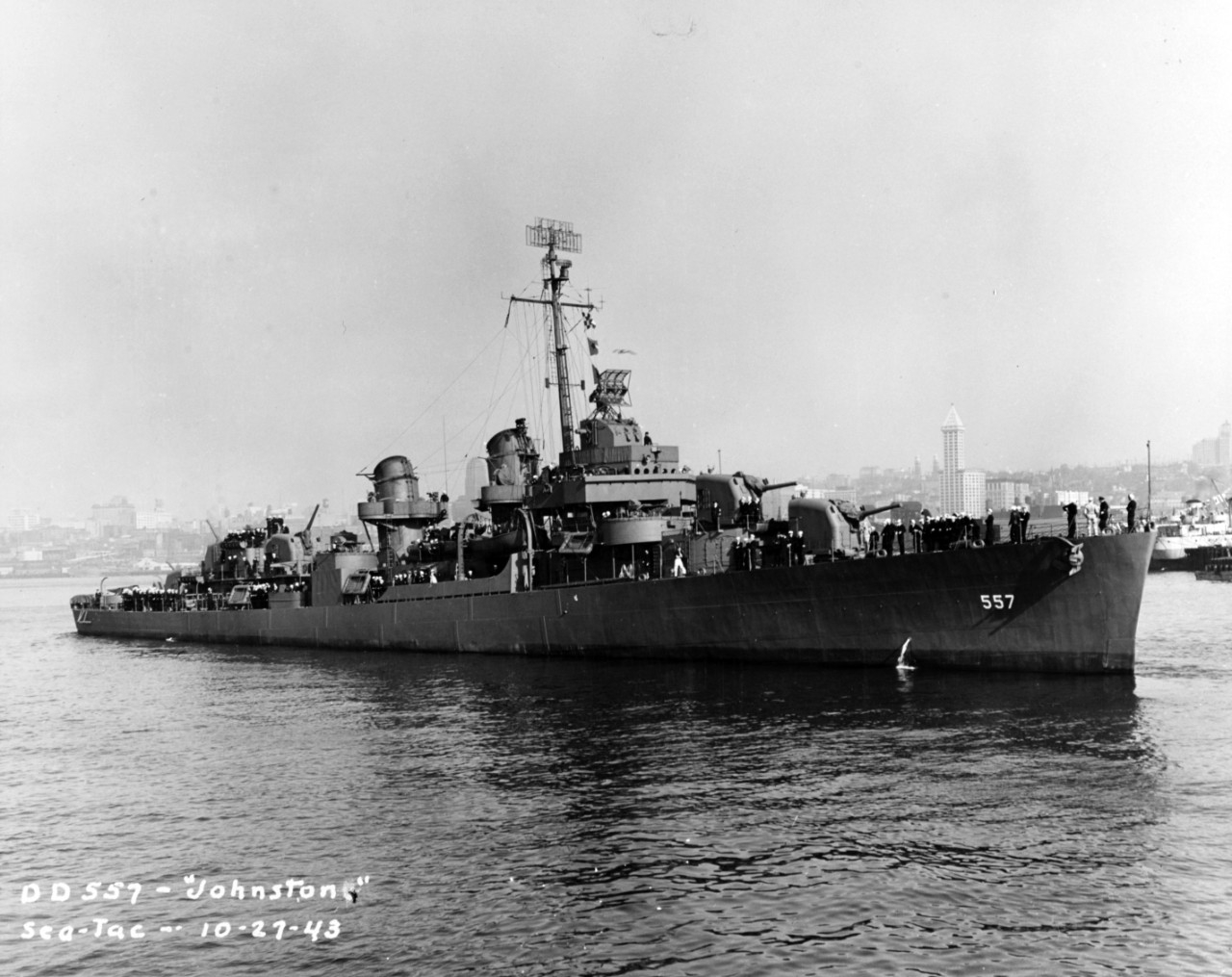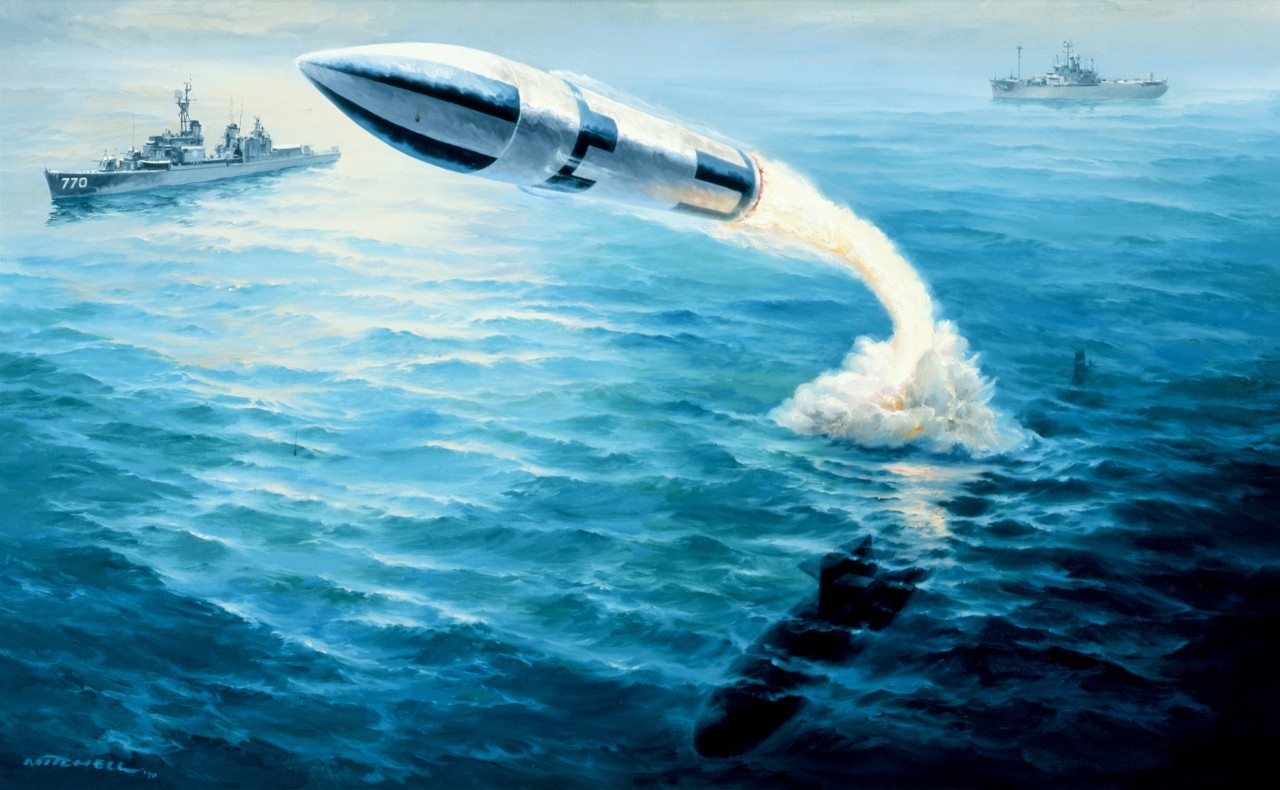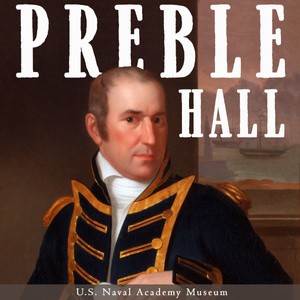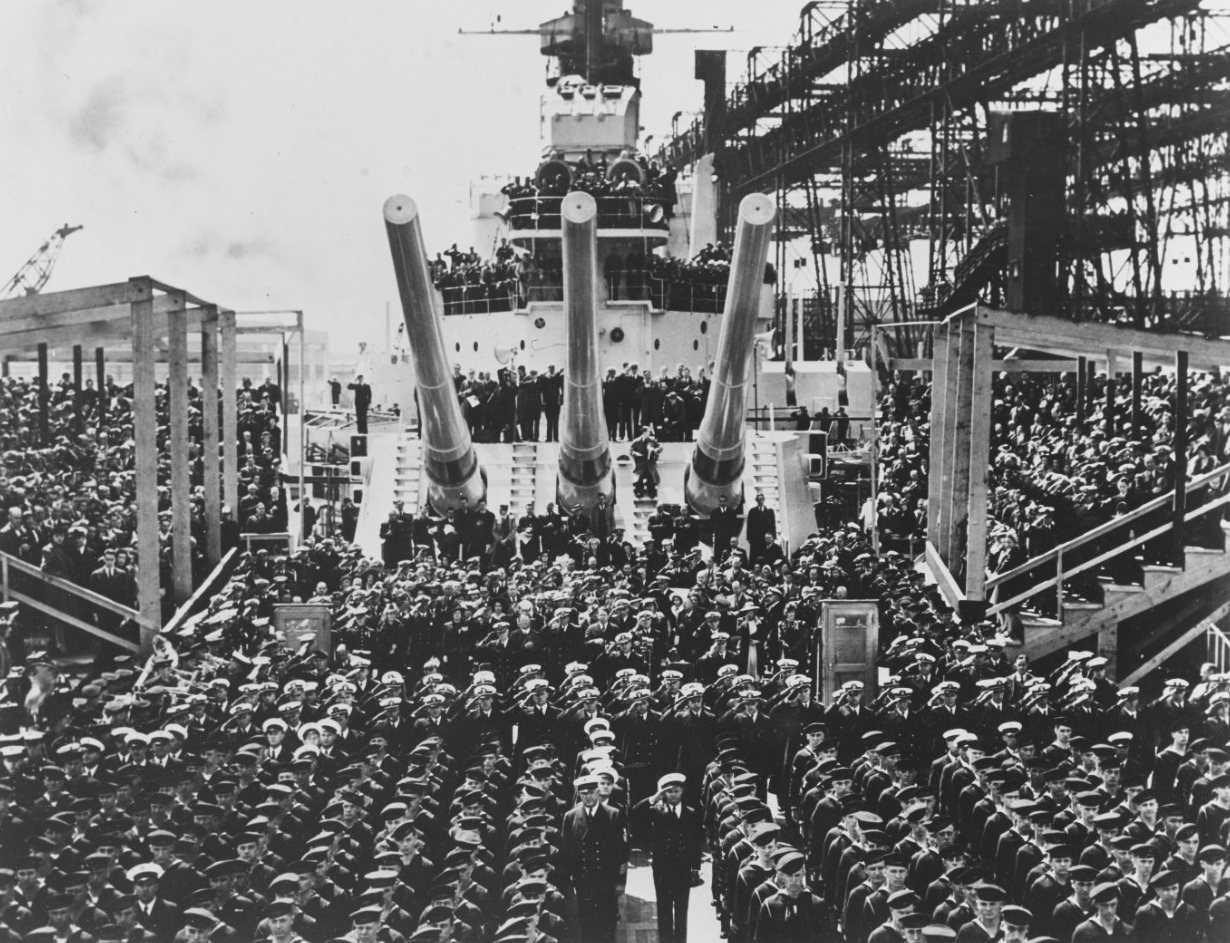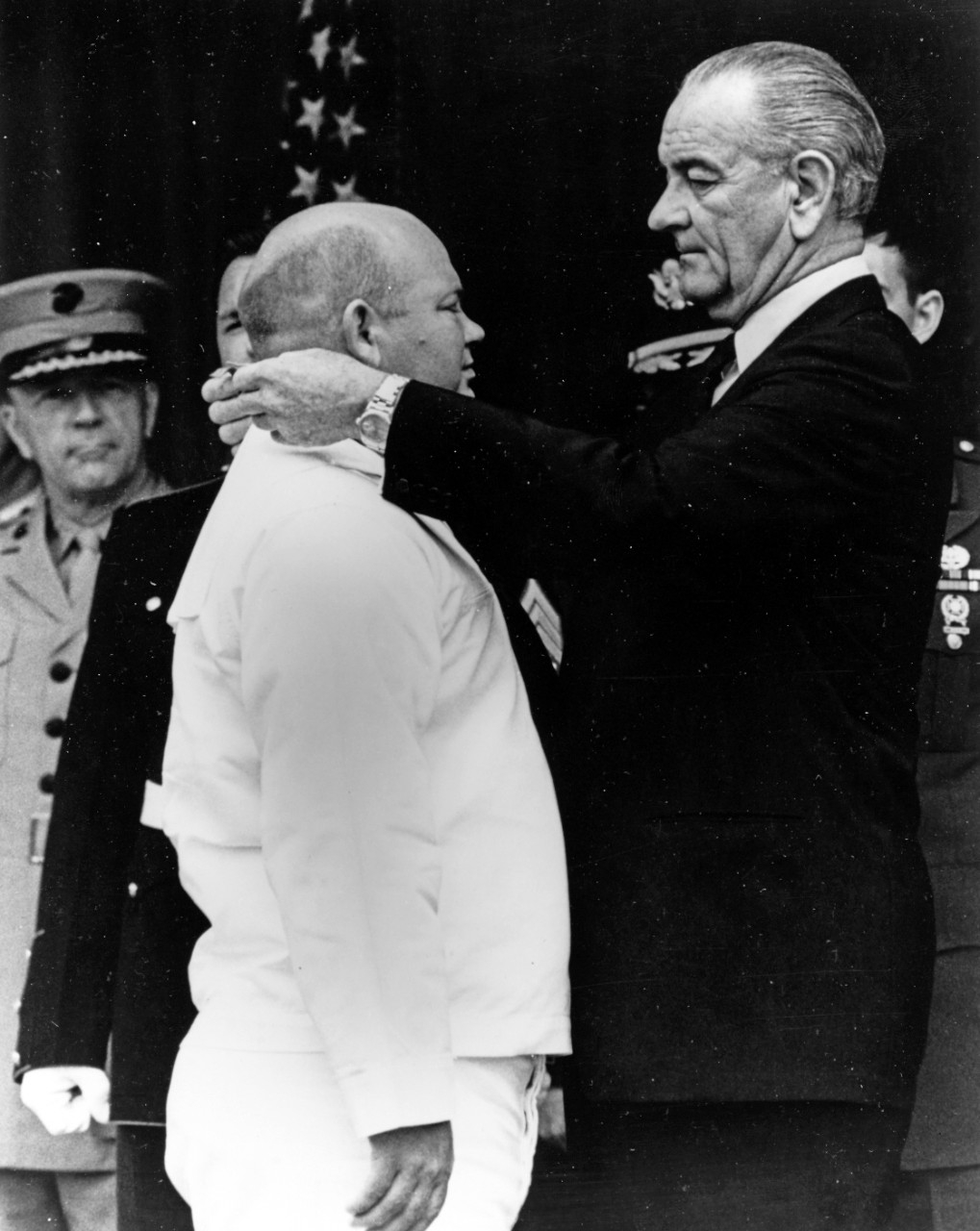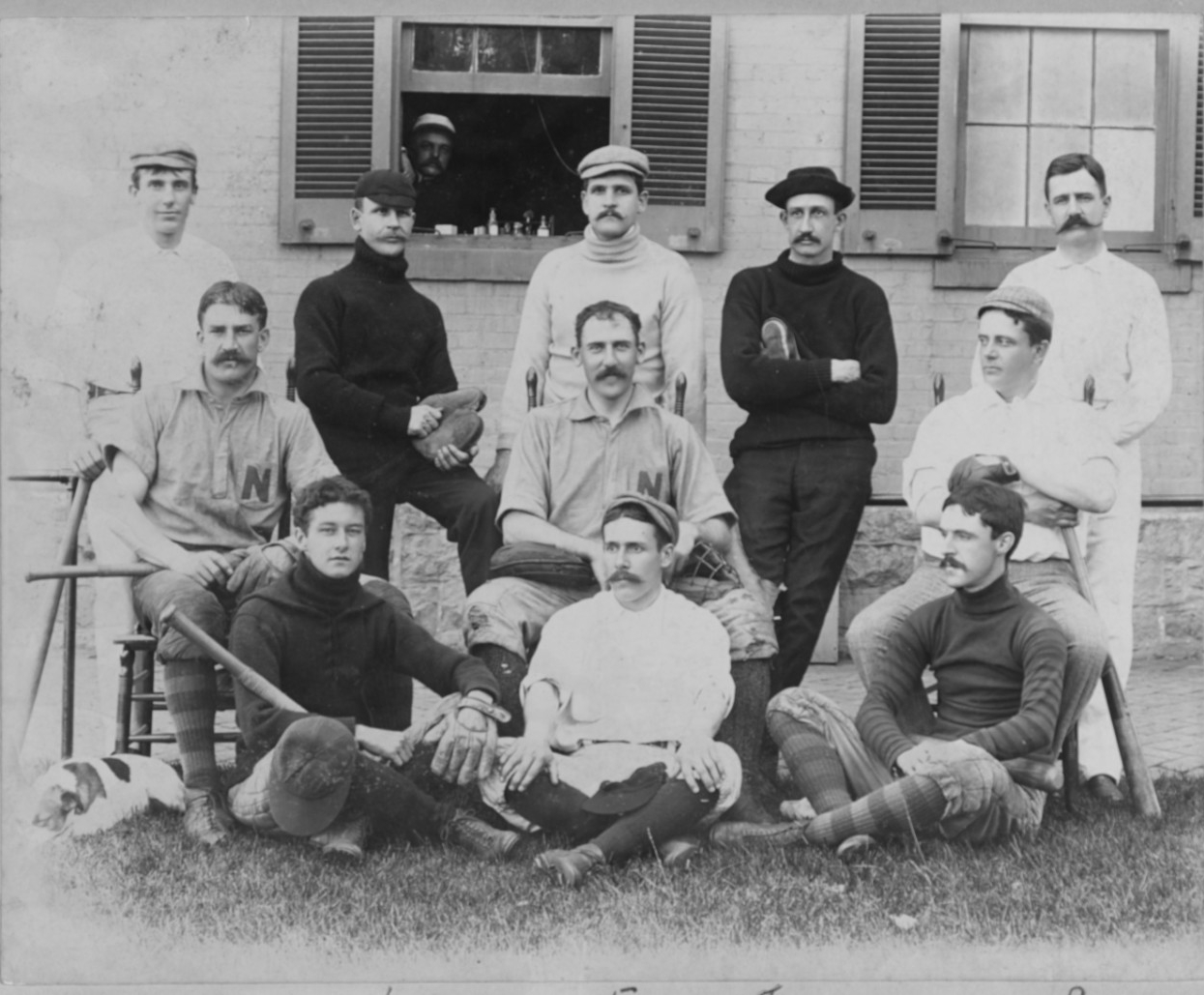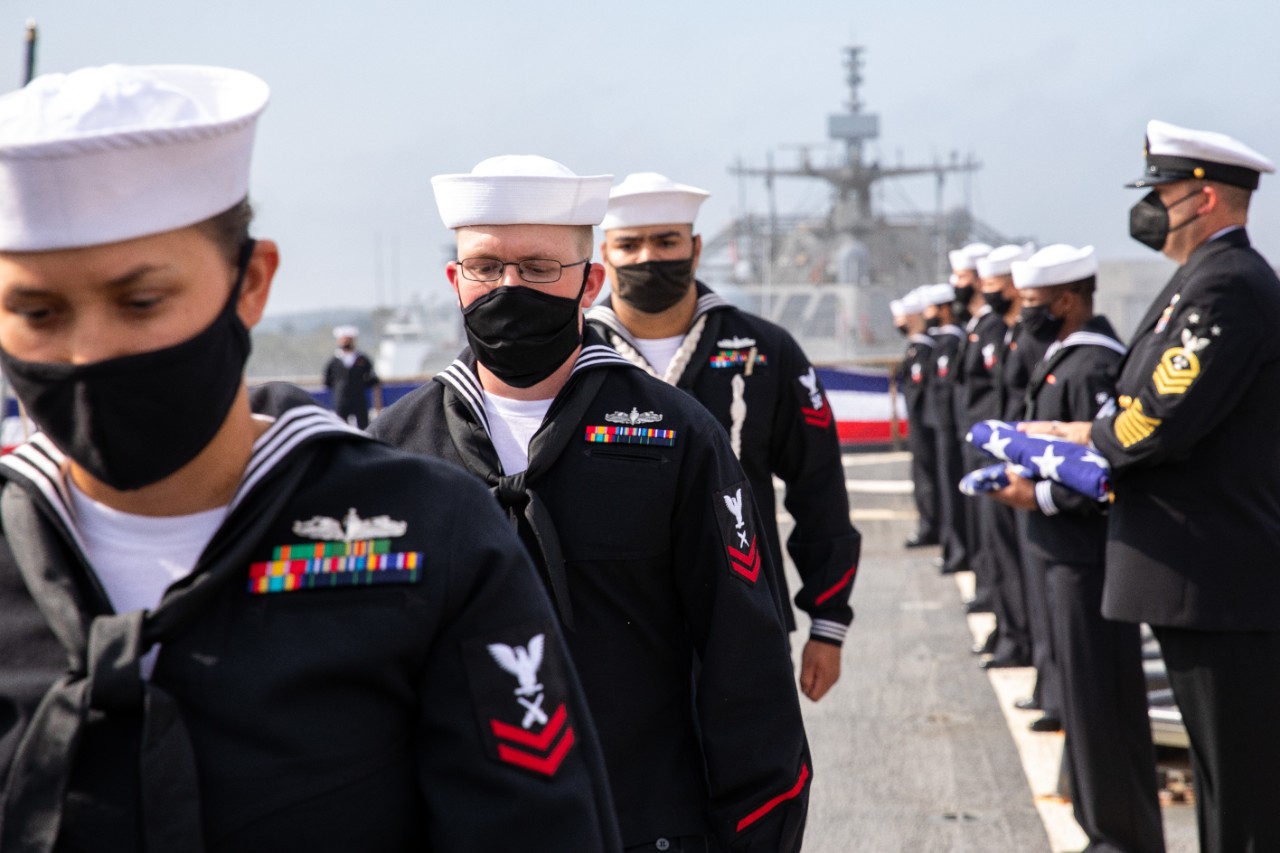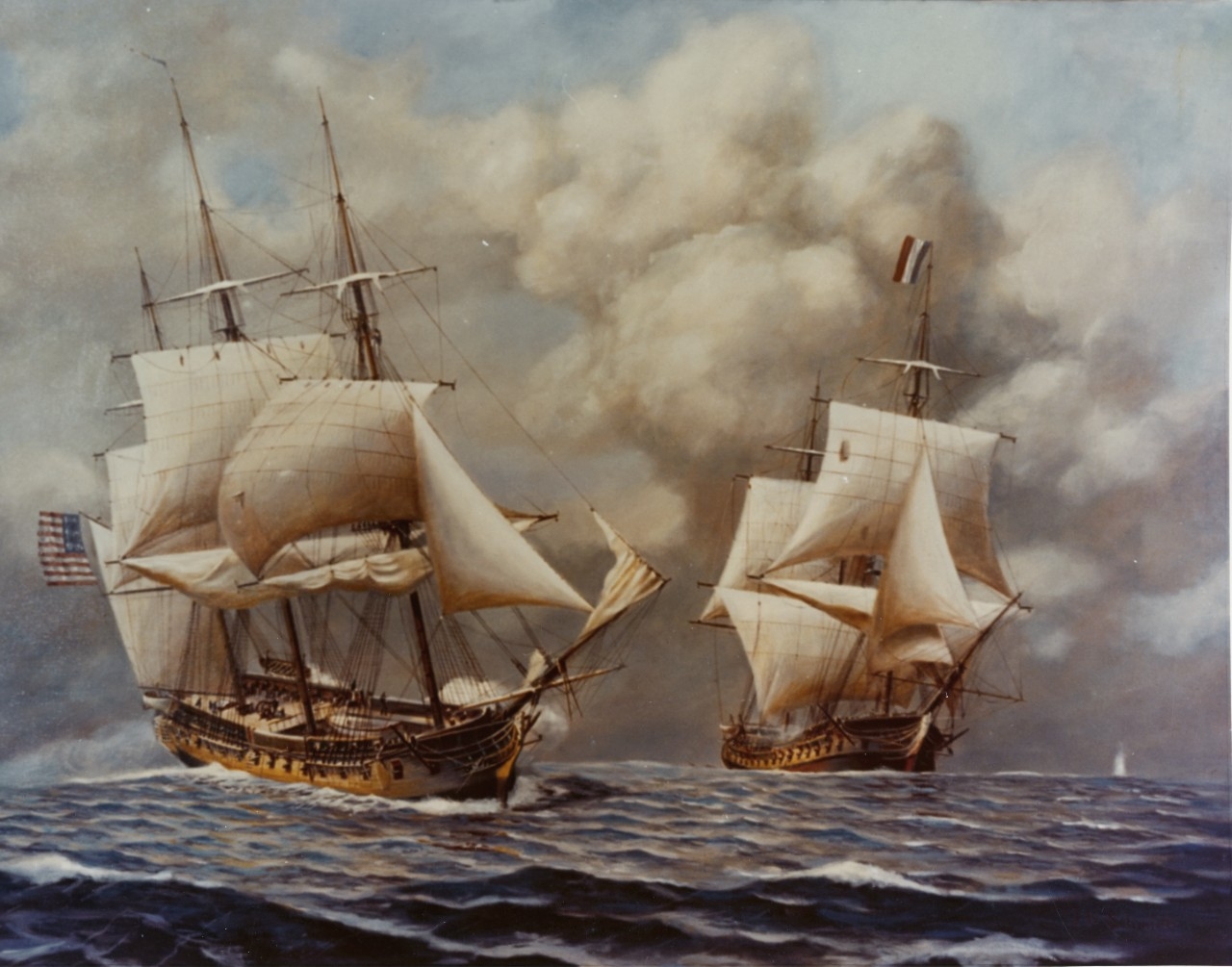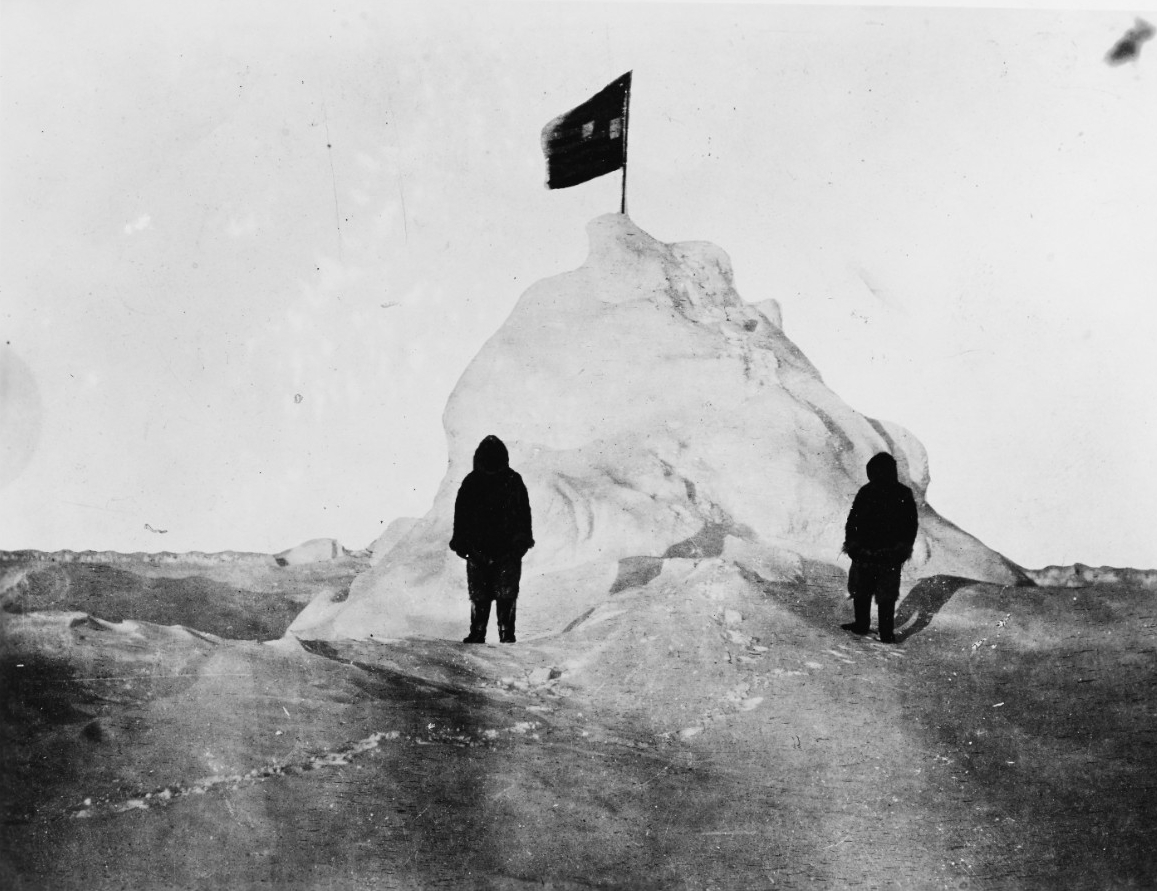Compiled by Brent Hunt, Naval History and Heritage Command’s Communication and Outreach Division
Wreckage Confirmed as USS Johnston
A team of underwater explorers led by entrepreneur, explorer, and retired naval officer Victor Vescovo, have announced they have located a section of wreckage belonging to the World War II ship USS Johnston, lost at the Battle off Samar on Oct. 25, 1944. Imagery from the discovery clearly shows the ship’s hull number 557, confirming the identity of the wreck. “The image is impressive, and we look forward to seeing the rest of the data collected during the expedition, because the story of the Fletcher-class destroyer USS Johnston and her crew is a perfect example for modern Sailors of the honor, courage, commitment, and valor of their predecessors from the Greatest Generation,” said NHHC Director Sam Cox. Commanded by Cmdr. Ernest Evans, the outgunned and outmanned crew of Johnston charged into a line of massive Japanese warships in order to protect the American landing force engaged in liberating the Philippines. Although the ship was ultimately lost, Johnston caused heavy damage to the Japanese during the battle. Evans was awarded the Medal of Honor posthumously for his heroic leadership. For more, read the article at NHHC’s website.
Happy 121st Birthday Submarine Force
On April 11, 1900, the U.S. Navy officially joined the undersea world when it purchased the submarine Holland. The boat, designed by John P. Holland, proved valuable for experimental purposes during her 10-year career. U.S. submarines did not play a large role in World War I, but they played a huge role during World War II. Assessments indicate that U.S. submarines sank 540,192 tons of Japanese naval and 4,779,902 tons of merchant shipping during the course of the war, accounting for 54.6 percent of all Japanese vessel losses. USS Nautilus—developed by Hyman G. Rickover—was the first nuclear-powered submarine and the first submarine to cross the North Pole under the Arctic polar ice pack. USS George Washington made history on July 20, 1960, when she successfully launched the first Polaris missile while submerged. The Tomahawk land-attack missile was later developed and was first used by submarines in combat during Desert Storm by USS Louisville and USS Pittsburgh. Happy birthday, submarine force!
Preble Hall Podcast
In a recent naval history podcast from Preble Hall, David McKenzie, who is a public historian currently completing his doctorate at George Mason University, discusses Americans who served in the Mexican army and navy in the 1820s. McKenzie currently studies 19th-century U.S. and Latin American history, focusing on U.S. citizens who moved to Mexico’s interior between 1821 and 1846. The Preble Hall podcast, conducted by personnel at the U.S. Naval Academy Museum in Annapolis, MD, interviews historians, practitioners, military personnel, and other experts on a variety of naval history topics from ancient history to more current events.
Historic Ship Nautilus Opened
On April 11, 1986, historic ship Nautilus was opened to the public at the Submarine Force Museum in Groton, CT. Nautilus was the world’s first nuclear-powered submarine and took nearly 18 months to construct. On July 23, 1958, Nautilus departed Pearl Harbor, HI, under secret orders to conduct “Operation Sunshine”—the first crossing of the North Pole by a vessel. On Aug. 3, Nautilus commanding officer, Cmdr. William Anderson, announced to his 116-member crew, “For the world, our country, and the Navy—the North Pole.” Nautilus accomplished the seemingly impossible, reaching the geographic North Pole, 90 degrees north, while submerged. Over the course of her 25 years of service, Nautilus was involved in a variety of developmental testing programs and was the first nuclear-powered submarine assigned to Sixth Fleet. On March 3, 1980, Nautilus was decommissioned after steaming more than half a million miles. The boat was designated a National Historic Landmark by the Secretary of the Interior on May 20, 1982.
North Carolina Commissioned—80 Years Ago
On April 9, 1941, USS North Carolina was commissioned at the New York Navy Yard. Some of the notable battles she participated in were the Guadalcanal Campaign, Battle of the Eastern Solomons, Battle of the Philippine Sea, and gunfire support during the Battle of Iwo Jima and Battle of Okinawa. During the assault on Okinawa on April, 6, 1945, North Carolina downed three kamikazes, but took a 5-inch hit from a friendly ship during the melee of anti-aircraft fire. North Carolina received 12 battle stars for her World War II service. Today, the battleship serves in Wilmington, NC, as a memorial to North Carolinians of all services killed during the war. For more on North Carolina’s naval history, visit NHHC’s state infographics collection.
Murky Waters, Crystal-Clear Legacy
In his years of active duty service, Boatswain’s Mate 1st Class James E. Williams was no stranger to combat. He served in both the Korean and Vietnam Wars, and his experience was rewarded with more responsibility. He commanded River Patrol Boat (PBR) 105 and another PBR on the murky waters of the treacherous Mekong Delta. Many of the patrols were met with heavy enemy resistance, and Williams’ crew obtained high-value intelligence information during several engagements. Williams, who had already received a Silver Star and two Bronze Stars for his heroic leadership, would need that combat experience for what took place on Oct. 31, 1966, an action that would ultimately earn him the Medal of Honor. During a 1997 interview, Williams described the day’s patrol as “a relax-and-recreation patrol as opposed to the more dangerous night operations.” The crew, still alert and ready, jumped into action when two high-speed Viet Cong vessels were spotted. After the PBR had disabled one vessel, another slipped into a shallow canal, forcing PBR-105 and PBR-101 into an alternative route. This detour put both boats directly into an enemy staging area. “Looking at the map, I could see where he had to come out,” said Williams. “I turned hard right to wait for him. As I did that, lo and behold, we found a big staging area. All I could see were boats and people. They were shooting at us from the right and left and we were shooting. They were doing more of hitting each other than we were.” For more, read the U.S. Navy press release.
Revisiting Navy Medicine’s Field of Dreams: A Look Back at Navy Medicine’s Curious Baseball Heritage
April 1 was opening day of this year’s Major League Baseball season, and with it, a hint of a post-pandemic world and return to normalcy. From its meager beginnings to its larger-than-life legends, baseball has impacted American culture like no other sport. Baseball and the Armed Forces also have their own unique history. Even Navy medicine has its unique baseball heritage. In NHHC’s photo archives, there is a photograph of the U.S. Naval Academy’s officer baseball team dated 1895. Sitting in the second row, holding a baseball bat, is none other than future Navy Surgeon General Dr. Charles F. Stokes, who also invented the wire-basket stretcher. It has been rumored he came up with the idea for the “Stokes Stretcher” midway through the seventh inning in one of his baseball games (seventh inning stretch). During the 1917 season, there is a good chance that Dr. Cary Grayson (President Woodrow Wilson’s personal physician and confidant) witnessed the play of the Washington Senators shortstop John “Doc” Lavan, an actual doctor and Major League Baseball’s only commissioned Navy physician. For more on Navy medicine’s history with America’s past time, read the article. For more on Navy athletics, go to NHHC’s website.
Fort McHenry Decommissions After 33 Years of Service
On March 27, the Whidbey Island–class dock landing ship USS Fort McHenry held a small, COVID-conscious decommissioning ceremony at Naval Station Mayport, FL, before her inactivation, which is scheduled to take place April 16. “I am humbled to be with you on this bittersweet day as we gather here at Naval Station Mayport to commemorate this ship’s 33 years of commissioned service,” said Rear Adm. Robert Katz, commander of Expeditionary Strike Group (ESG) 2. “The history of Fort McHenry lies within each of the ship’s Sailors, and it is my hope this pride in their namesake guided all who crossed its quarterdeck and reported for duty.” Fort McHenry was commissioned on Aug. 8, 1987, at the Lockheed Shipyard in Seattle, WA. Some of the many highlights of the ship’s service include support of Operations Desert Shield/Desert Storm, Vigilant Warrior, and Enduring Freedom. Fort McHenry also assisted with humanitarian efforts domestically, such as oil spill cleanup in Alaska’s Prince William Sound, and internationally, supporting disaster relief efforts in East Timor in 2001, and in the Philippines and Indonesia in 2004. For more, read the U.S. Navy press release.
Webpage of the Week
This week’s Webpage of the Week is a new addition to NHHC’s “Notable Ships” section Frigate Constellation—designed by naval constructors Joshua Humphreys and Josiah Fox, whose plans were altered in the execution by builder David Stodder and superintendent of shipbuilding Captain Thomas Truxtun—was constructed at the Sterrett Shipyard in Baltimore, MD. She was launched on Sept. 7, 1797. The ship was one of six frigates authorized by Congress with passage of the Naval Act of 1794. Under the command of Truxtun, Constellation set sail for the Caribbean and subsequently to the West Indies to protect U.S. commerce. On Feb. 9, 1799, the ship spotted French 40-gun frigate L’Insurgente off Nevis. In a hard-fought battle that lasted a little more than hour, Constellation defeated the French ship and took her as a prize. In the following months, Constellation also seized French privateers Diligent and Union. On Feb. 1, 1800, the American frigate engaged 52-gun frigate L’ Vengeance in a lengthy, furious battle. Although the French ship twice struck her colors and nearly sank, she managed to escape under the cover of darkness. For more, check out the page today. It contains a short history, suggested reading, an infographic on Constellation’s rich history, and selected imagery.
Today in Naval History
On April 6, 1909, Cmdr. Robert E. Peary reported reaching the North Pole, dropping a note in a glass bottle into a crevice in the ice that stated: “I have this day hoisted the national ensign of the United States of America at this place, which my observations indicate to be the North Polar axis of the Earth, and have formally taken possession of the entire region, and adjacent, for and in the name of the President of the United States of America.” During his naval career, between expeditions to the tropics and to the arctic regions, he performed various assignments in the Civil Engineer Corps. He attained the rank of captain on Oct. 20, 1910, and by a special action of Congress dated March 3, 1911, he was placed on the retired list of the Navy as a rear admiral, effective April 6, 1909, the date he discovered the North Pole. He died in Washington, DC, on Feb. 20, 1920, and is tombed in Arlington National Cemetery. For more on polar exploration, go to NHHC’s website.
For more dates in naval history, including your selected span of dates, see Year at a Glance at NHHC’s website. Be sure to check this page regularly, as content is updated frequently.

